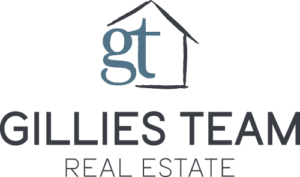Despite what many think, we’re not in store for a housing market crash.
Looking to buy a home? Click here to search for a home in your area.
Looking to sell a home? Click here for a FREE home valuation.
Are we in for a market crash like 2008? After watching stocks fall, many people are panicking and wondering whether we’ll see a repeat of the 2008 housing crisis. The idea that we’re in a similar situation to the one that preceded the Great Recession may not be as simple as it looks on the surface. To prove or bust this myth, we’ll need to look at the causes of the last market crash and compare it with what we’re seeing today. To find out what’s in store for our market watch this short video.
Here is a transcription:
Hey, this is Michael Gillies with The Gillies Team. A couple of weeks ago I did a video on the relationship between the stock market and the real estate market. In that video I promised a little more info about whether we’re in for a real estate crash. Here we go.
After watching the stock market fall, we’re seeing some people panic and assume that this will be a repeat of the 2008 housing crisis. To bust this myth, you just have to look at the cause of each crash.
In the 2008 market crash, the stock market and real estate were tied together, each dependent on the other to continue the unprecedented run that led to the crash. It’s important to note that the crash itself wasn’t caused by a single event. The factors that caused it were many years in the making.
Lending guidelines in the late 1990s were relaxed and credit was made available to borrowers that in the past would not have qualified for the loan. This pushed huge numbers of buyers, eager to own their small part of the American dream, into the market. Increased demand put intense upward pressure on prices and the market soared. But how was Wall Street involved?
For decades default rates on mortgages were extremely low and home prices in the US continued to rise – this made mortgages a great investment. Wall Street wanted a piece of this action and in the 1980’s created a new financial product called a Mortgage Backed Securities. Basically a mortgage company would provide loans to borrowers, Wall Street would buy these loans and put them together in packages of thousands of loans to resell to investors. These Mortgage Backed Securities were extremely profitable and the system worked perfectly until they decided there weren’t enough mortgages to satisfy their investors.
To fix this, Wall Street firms created new guidelines that would allow mortgage companies to provide mortgages to people that wouldn’t have qualified before. We started to see Adjustable Rate Mortgages, ARMs, limited or no documentation loans and lower credit scores. This increased the number of people getting mortgages but lowered the quality of the mortgages in the Mortgage Backed Securities that were being sold to investors. Because these loans were riskier they had higher interest rates creating more profit for investors. The market was booming – mortgages were easy to get and home prices were soaring.
The boom was built on a shaky foundation of loans to less-qualified buyers and Adjustable Rate Mortgages that would eventually increase in rate and payment. The ticking time bomb of ARMs finally exploded and in 2007 the default rate from the newly increased mortgage payments went from 3% in 2000 to over 10% in 2007. This led to a massive oversupply of housing inventory and and prices plummeted.
The once safe and profitable Mortgage Backed Securities were now impossible to sell and their values were a fraction of what they were. Because nearly all financial firms were heavily invested in Mortgage Backed Securities not to mention pension and mutual funds owned by the middle class, they were brought to the point of collapse.
So in summary, what was a stable and reliable housing market was injected with an artificial boost to increase sales of a Wall Street security. When reality hit and people couldn’t make their payments the real estate market collapsed and took the stock market with it.
Fast forward to 2020 – unlike 2008, the stock market instability is event-based. It’s not due to a systemic issue or the popping of a bubble. The current stock market instability is not due to sinking housing values. In most areas home values are still increasing or remaining stable. Also, the housing market is on much more solid footing with more traditional access to credit and a more stable and sustainable increase to our current pricing level. Our market has been strong and increasing at a healthy rate. In this case, the stock market collapse was triggered by a global event, the Corona Virus, that is wrecking havoc on US and global commerce. Especially in our service and retail oriented economy. And of course there are always other factors at play like the diving price of oil.
So, even though on the surface stock market conditions may resemble what you remember from 2008, digging a little deeper shows how the situations are very different. It’s still too early to predict exactly how the 2020 crash will continue to affect global economies – but the flawed foundation for a 2008-type crash aren’t present now. With some states starting to roll back business closures the hope is that the economy will create a bridge from one successful economy to another and that the housing market will continue along at its stable, healthy rate.
If you have any questions about your home’s value or whether it’s the right time to buy or sell give us a call. Every situation is different and we want to make sure you have the info you need to make a great decision. As always, we love you and we’ve got your back.





 Welcome! By submitting information, I am providing my express written consent to be contacted by representatives of this website through a live agent, artificial or prerecorded voice, and automated SMS text at my residential or cellular number, dialed manually or by autodialer, by email, and mail.
Welcome! By submitting information, I am providing my express written consent to be contacted by representatives of this website through a live agent, artificial or prerecorded voice, and automated SMS text at my residential or cellular number, dialed manually or by autodialer, by email, and mail.


